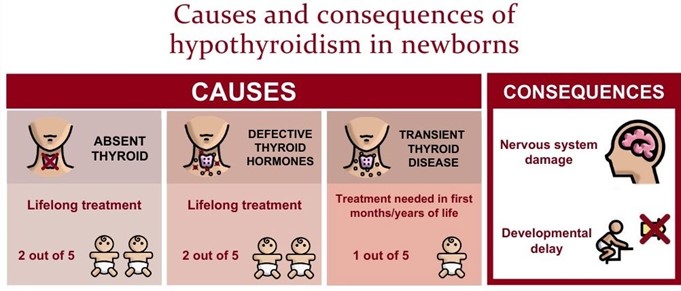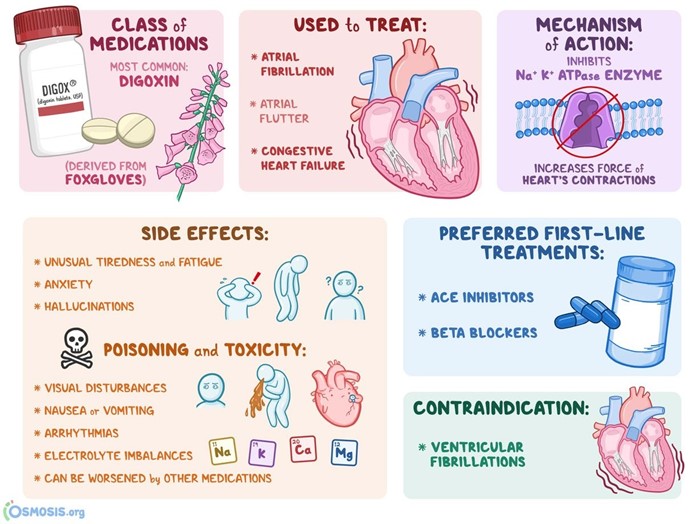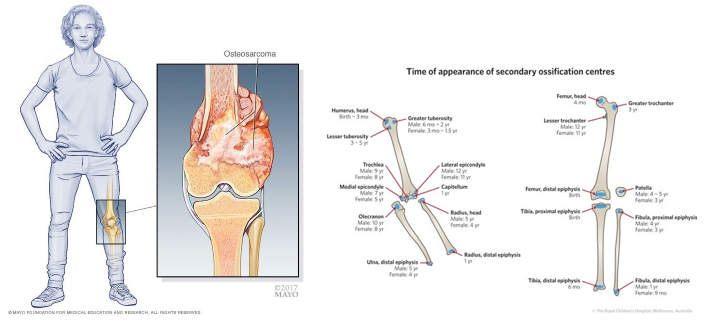A breastfeeding infant, screened for congenital hypothyroidism, is found to have low levels of thyroxine (T4) and high levels of thyroid stimulating hormone (TSH). Which is the best explanation for this finding?
The TSH is high because of the low production of T4 by the thyroid.
The thyroxine level is low because the TSH level is high.
The thyroid gland does not produce normal levels of thyroxine for several weeks after birth.
High thyroxine levels normally occur in breastfeeding infants.
The Correct Answer is A
In a normal infant, T4 levels increase after birth due to stimulation by TSH from the pituitary gland. In this case, the T4 level is low and the TSH level is high, indicating that the thyroid gland is not producing enough T4 in response to TSH stimulation. This suggests that the infant may have congenital hypothyroidism, which requires prompt treatment to prevent developmental delays and other complications.
The low T4 level is not a direct cause of the high TSH level; rather, the high TSH level is a compensatory mechanism to increase T4 production. It is not normal for a breastfeeding infant to have high thyroxine levels. While the thyroid gland may take a few weeks to reach normal function after birth, the persistent low T4 and high TSH levels in this infant suggest a more serious issue.

Nursing Test Bank
Naxlex Comprehensive Predictor Exams
Related Questions
Correct Answer is A
Explanation
For an eight-month-old infant with heart failure, the nurse should withhold digoxin if the infant's apical pulse is less than 90 beats/minute and notify the healthcare provider. In this case, the infant's apical pulse is 88 beats/minute, so the nurse should withhold the digoxin and notify the healthcare provider.
Furosemide ( B), hydralazine (C), and enalapril (D) do not have specific parameters for withholding based on the infant's vital signs.

Correct Answer is A
Explanation
The adolescent client's symptoms of localized pain, swelling, and tenderness, particularly at night, are suggestive of a malignancy such as osteosarcoma, which is the most common primary bone tumor in children and adolescents.
Radial ossification in the soft tissues is a characteristic finding in osteosarcoma and is indicative of bone production by malignant cells. Other imaging modalities, such as X-rays, computed tomography (CT), and magnetic resonance imaging (MRI), may also reveal osteolytic or osteoblastic lesions in the bone.
Growing pains are a common, benign condition that occur in children and do not typically present with the
symptoms described in the case scenario.
Rhabdomyolysis is a medical emergency that involves the breakdown of skeletal muscle tissue and release of muscle fiber contents into the bloodstream. It can present with muscle pain, swelling, and tenderness, but typically occurs as a result of injury, infection, or drug toxicity.
Hemosiderosis is a rare condition characterized by the accumulation of iron in various tissues, including the liver, spleen, and bone marrow. It may present with symptoms such as fatigue, joint pain, and abdominal pain, but is not typically associated with the symptoms and imaging findings described in the case scenario.
Therefore, the nurse should consider osteosarcoma as the probable cause of the adolescent client's symptoms and imaging findings, and should collaborate with the healthcare team to develop a plan of care for diagnosis and treatment.

Whether you are a student looking to ace your exams or a practicing nurse seeking to enhance your expertise , our nursing education contents will empower you with the confidence and competence to make a difference in the lives of patients and become a respected leader in the healthcare field.
Visit Naxlex, invest in your future and unlock endless possibilities with our unparalleled nursing education contents today
Report Wrong Answer on the Current Question
Do you disagree with the answer? If yes, what is your expected answer? Explain.
Kindly be descriptive with the issue you are facing.
